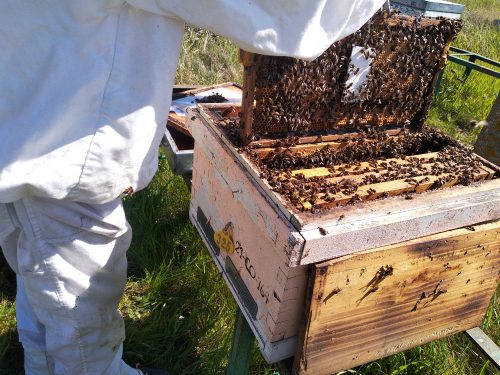Is it possible to analyze the pesticides inside a beehive without taking the pollen nor the beebread, and with a passive sampling strategy? The INSIGNIA members think it is.
Tenax® is a material that adsorbs molecules onto its surface, providing information about the contaminants in a certain environment. It would be enough to glue it to a plastic strip placed inside the hives for a certain amount of time to get information about the pesticides in contact with the bees. The problem, however, is that Tenax® is commercialized as a fine powder. Bees try to remove it from their hives and, usually, they succeed.
After testing out many different materials and means to glue Tenax® to their surfaces, a different approach was adopted. Tenax® can be dissolved in dichloromethane, changing its granular appearance.

This solution can be applied to a plastic strip and, once the dichloromethane is evaporated, Tenax® is completely adhered to the plastic and results in a smooth surface. The drying process is very fast: it takes about 5 minutes, but it can be reduced to 2 minutes with the application of a nitrogen stream.


Now it is just a matter of placing them inside the hives and waiting. No bother for the bees –nor for the beekeepers!

